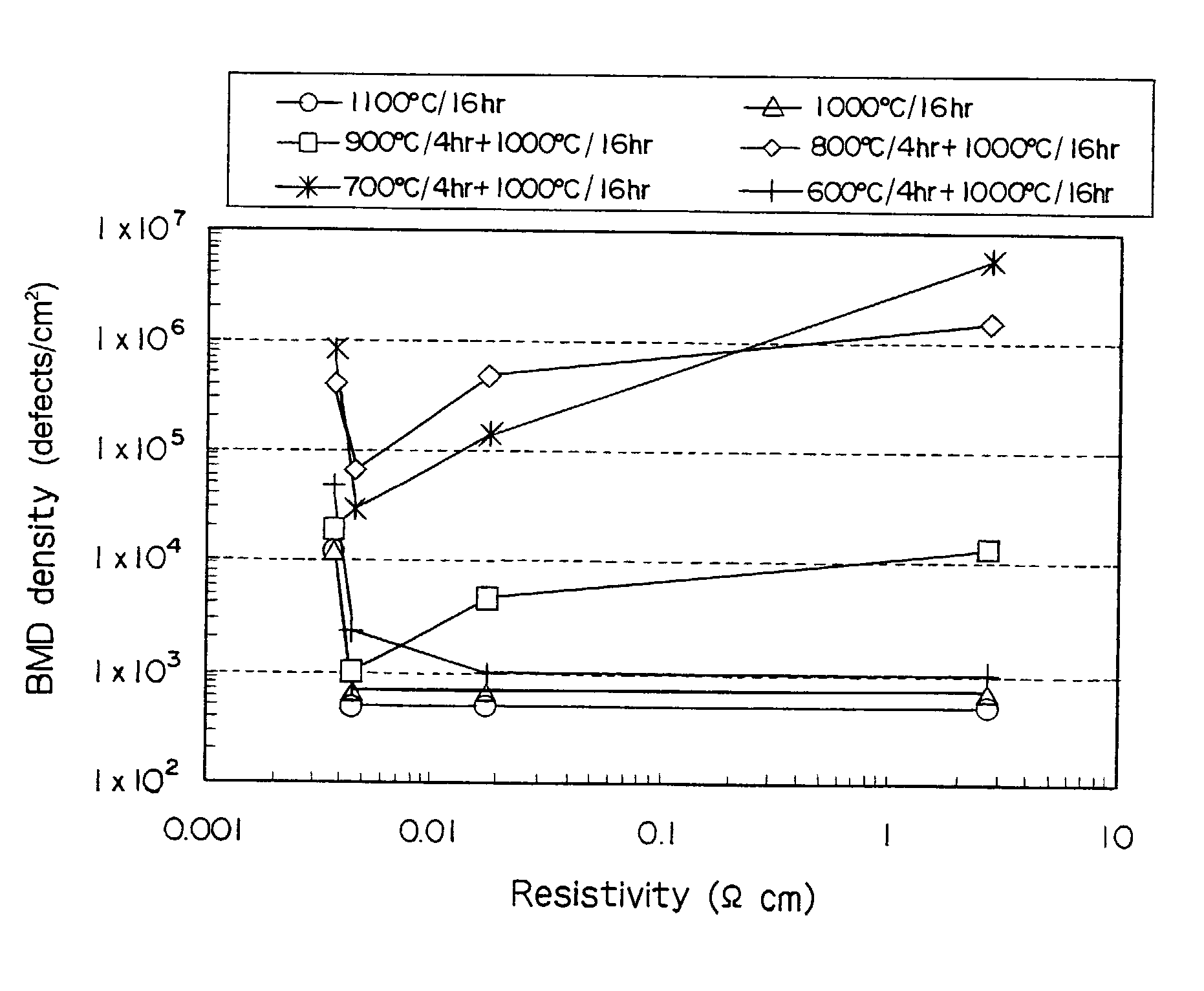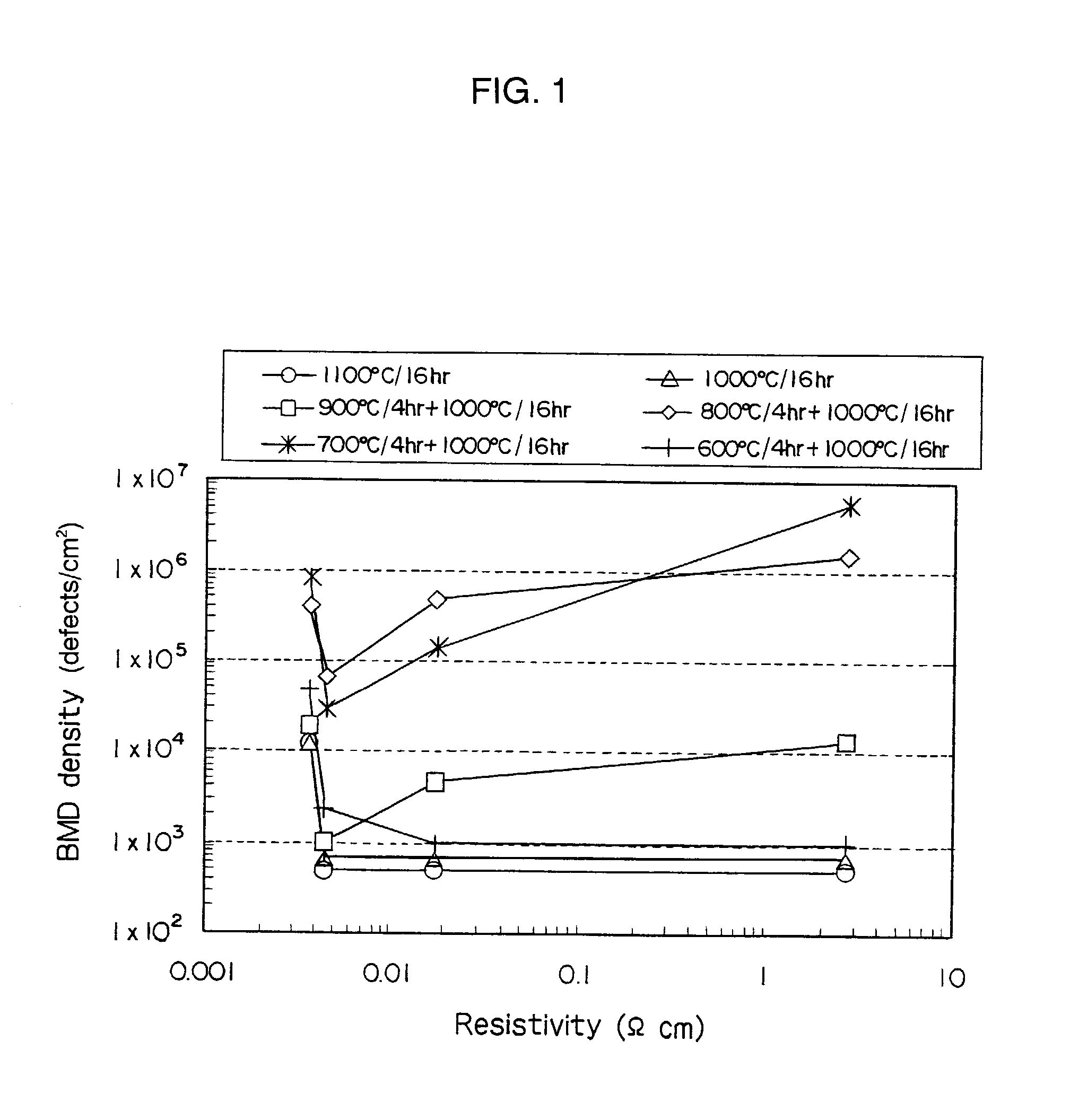Silicon wafer and epitaxial silicon wafer
a technology of epitaxial silicon and silicon wafer, which is applied in the field of epitaxial silicon wafer and silicon wafer, can solve the problems of increasing leakage current, deterioration of electric characteristics, and increasing quality standards of silicon wafers on which devices are formed
- Summary
- Abstract
- Description
- Claims
- Application Information
AI Technical Summary
Problems solved by technology
Method used
Image
Examples
example 1
[0045] For examining the efficacy of nitrogen addition in arsenic-doped n-type silicon wafers, silicon wafers were prepared while varying the arsenic addition level and nitrogen concentration and, after evaluation heat treatment, each wafer was measured for wafer inside BMD density.
[0046] Specifically, silicon single crystals having an initial oxygen concentration of 11.5 to 18.5.times.10.sup.17 atoms / cm.sup.3 (ASTM F 121-79), a crystal orientation of (100) and a diameter of 150 mm were grown by the Czochralksi method from silicon melts while the arsenic addition level was varied to give a resistivity within the range of 0.018 .OMEGA.cm to 0.003 .OMEGA.cm and, simultaneously, the nitrogen concentration was varied.
[0047] Wafers were sliced from each silicon single crystal, and mirror polished sample wafers were prepared therefrom. Each sample wafer was subjected to evaluation heat treatment, namely isothermal heat treatment under conditions of 1,100.degree. C. (heating) / 16 hours (mai...
example 2
[0049] For examining the efficacy of nitrogen addition in epitaxial silicon wafers derived from arsenic-doped n-type silicon wafers by forming epitaxial layer, silicon wafers were prepared while varying the arsenic addition level and nitrogen concentration, and the silicon wafers were subjected to epitaxial growing treatment. The thus-produced epitaxial silicon wafers were subjected to evaluation heat treatment and then measured for the density of BMDs formed in the wafer inside. Epitaxial silicon wafers derived from the silicon wafers subjected to heat treatment for forming oxygen precipitates prior to epitaxial growing treatment were also measured for BMD density.
[0050] Specifically, silicon single crystals having an initial oxygen concentration of 8 to 18.5.times.10.sup.17 atoms / cm.sup.3 (ASTM F 121-79), a crystal orientation of (100) and a diameter of 150 mm were grown by the Czochralksi method from silicon melts while the arsenic addition level was varied to give a resistivity ...
PUM
 Login to View More
Login to View More Abstract
Description
Claims
Application Information
 Login to View More
Login to View More - R&D
- Intellectual Property
- Life Sciences
- Materials
- Tech Scout
- Unparalleled Data Quality
- Higher Quality Content
- 60% Fewer Hallucinations
Browse by: Latest US Patents, China's latest patents, Technical Efficacy Thesaurus, Application Domain, Technology Topic, Popular Technical Reports.
© 2025 PatSnap. All rights reserved.Legal|Privacy policy|Modern Slavery Act Transparency Statement|Sitemap|About US| Contact US: help@patsnap.com


